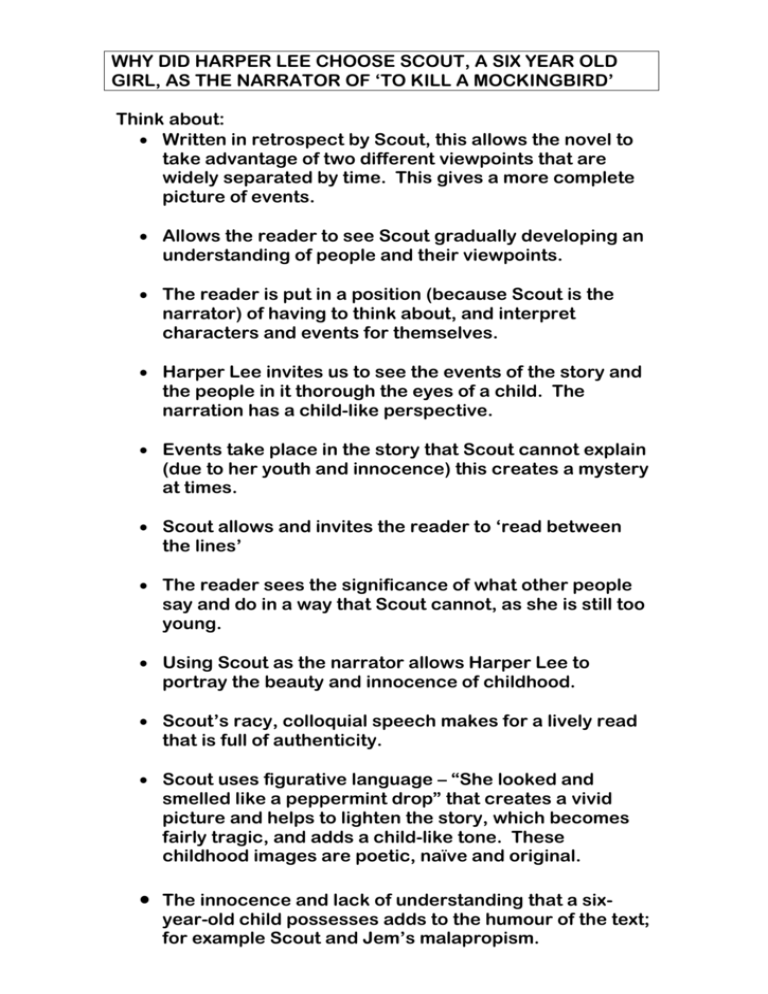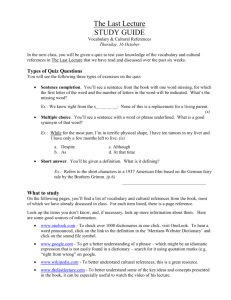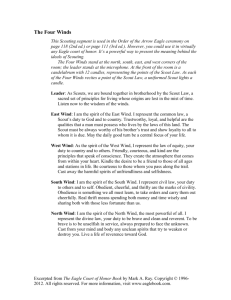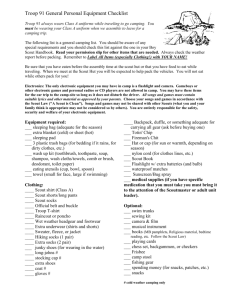Scout as narrator notes.doc
advertisement

WHY DID HARPER LEE CHOOSE SCOUT, A SIX YEAR OLD GIRL, AS THE NARRATOR OF ‘TO KILL A MOCKINGBIRD’ Think about: Written in retrospect by Scout, this allows the novel to take advantage of two different viewpoints that are widely separated by time. This gives a more complete picture of events. Allows the reader to see Scout gradually developing an understanding of people and their viewpoints. The reader is put in a position (because Scout is the narrator) of having to think about, and interpret characters and events for themselves. Harper Lee invites us to see the events of the story and the people in it thorough the eyes of a child. The narration has a child-like perspective. Events take place in the story that Scout cannot explain (due to her youth and innocence) this creates a mystery at times. Scout allows and invites the reader to ‘read between the lines’ The reader sees the significance of what other people say and do in a way that Scout cannot, as she is still too young. Using Scout as the narrator allows Harper Lee to portray the beauty and innocence of childhood. Scout’s racy, colloquial speech makes for a lively read that is full of authenticity. Scout uses figurative language – “She looked and smelled like a peppermint drop” that creates a vivid picture and helps to lighten the story, which becomes fairly tragic, and adds a child-like tone. These childhood images are poetic, naïve and original. The innocence and lack of understanding that a sixyear-old child possesses adds to the humour of the text; for example Scout and Jem’s malapropism.







